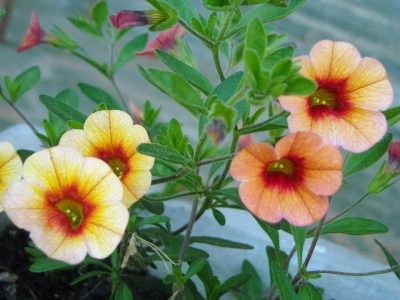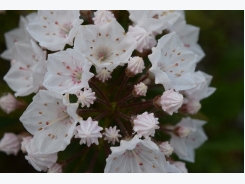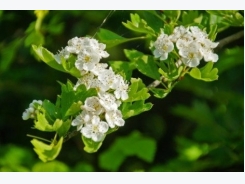How to Grow Calibrachoa

Calibrachoa is a lovely and petite annual that adds a burst of color to containers and garden beds. You can enjoy their blooms from early spring until late fall as these hardy little beauties can handle a touch of frost.
They resemble a miniature version of some trailing types of petunias with their tender, bell-shaped petals and their brilliant colors. Unlike the petunia though, calibrachoa won't wilt in the heat. This sun loving annual blooms and blossoms best the more sun it gets.
Calibrachoa, also known as million bells and trailing petunia, is a recent arrival in the U.S. from South America. It grows as an evergreen perennial in its native environment. In United States Department of Agriculture Hardiness Zones 9-11, you just might be able to enjoy these flowers every year.
How to Grow and Care for Calibrachoa
Calibrachoa produces very few seeds if any, so they are propagated through tip cuttings. However, since many of the calibrachoa cultivars are patented, you should plan on purchasing your calibrachoa plant just to be safe. Once your plant is home, wait until after the first frost to plant it outdoors. Even though it is a frost tolerant plant, your calibrachoa will appreciate protection from the cold.
Calibrachoa loves well draining, organically rich soil. So, take time to infuse some peat moss or compost into your regular soil before planting your calibrachoa in a bed. If you are preparing containers for calibrachoa, mix a good potting soil with some nice organic soil.
For the most bloom for your buck, plant your calibrachoa in plenty of sun with only a minimal amount of shade. And water this plant regularly. It requires an average amount of water, so check on your plant daily to keep up with how it's doing. Pay special attention to your container plants since containers dry out quickly in the sun.
Since your calibrachoa is a heavy bloomer, it is also a heavy feeder. After providing your plant with good organic soil to begin with, you should also fertilize your calibrachoa weekly with a controlled release fertilizer for flowers.
Calibrachoa has a reputation for attracting hummingbirds, which is an extra little bonus!
Calibrachoa Pests and Problems
Calibrachoa is generally a healthy plant. However, too much moisture and shade will make it susceptible to root rot, crown rot, and collar rot. Water this plant early in the day and provide plenty of sunshine to keep the thick foliage and the flowers dry - especially in humid areas. If one of your calibrachoa plants succumbs to rot, remove it, and try again next year.
Also, calibrachoa may attract a few pesky bugs like thrips, aphids, and whiteflies. These pests can be treated with sprays made from hot peppers or garlic. Or, just live with the bugs. They rarely do any serious damage to the plant.
Calibrachoa Varieties To Consider
There are only a couple dozen different calibrachoa varieties to choose from. In spite of this small number, there is a wide array of vibrant colors.
Here are a few outstanding cultivars:
'Mini Famous Double Blue' is a newer variety. The deep blue flowers of this calibrachoa boast a double layer of petals. And if the bounteous flowers themselves aren't inspiring enough, this petite plant mounds over with soft looking foliage that provides a beautiful contrast.
'Superbells Spicy' is another bounteous beauty. This variety will spill over the sides of a container in warm shades of a desert sunset.
'Superbells Lemon Slice' looks as sweet as candy! This bright flower has striped petals of pure white and juicy, lemony yellow. This variety flowers so profusely, it literally appears to more flower than foliage.
Tools

Phối trộn thức ăn chăn nuôi

Pha dung dịch thủy canh

Định mức cho tôm ăn

Phối trộn phân bón NPK

Xác định tỷ lệ tôm sống

Chuyển đổi đơn vị phân bón

Xác định công suất sục khí

Chuyển đổi đơn vị tôm

Tính diện tích nhà kính

Tính thể tích ao




 How to Grow Eucalyptus Trees
How to Grow Eucalyptus Trees  How to Grow Sea Berry
How to Grow Sea Berry